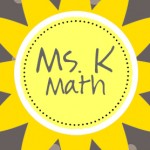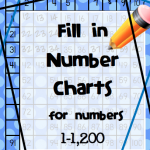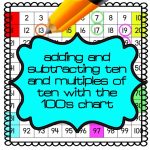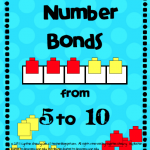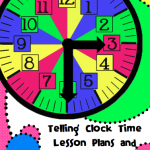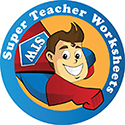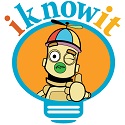I Had to Laugh
Last week I was looking over a second grader’s shoulder–a second grader I might add who had been held back a year. He had two ten frames on his paper to build a bond (sum) of ten, which was the assignment. On one of his ten frames he had drawn three dots and on the other ten frame he had drawn four dots. Beside his two ten frames he had written the equation 3 + 4 = 10.
I said, “I’m confused. Show me how three plus four makes ten.”
He held up three fingers on one hand and four on the other hand and began to count. Starting on one hand he began counting, “four, five, six, seven, eight, nine, ten.”
I said, “Really, three and four make ten? I’m confused. Are you sure three and four make ten?”
He promptly counted confidently again exactly the same way and arrived at the number ten. I ended up correcting his thinking, but he definitely made me smile on the inside with this misconception he had developed.
Leaving Behind No Child Left Behind
In case you haven’t heard the monumental news, Obama made a major decision in education last week. Some see this ploy as merely a political move especially since he didn’t give Congress the time to edit the current No Child Left Behind law, but nonetheless it affects the national educational landscape. His decision is giving states the choice to opt out of the No Child Left Behind law in exchange for waivers from certain aspects of NCLB. If a state chooses to opt out of NCLB (at least 45 states are expected to opt out), then they will receive flexibility with federal spending and with school improvement accountability. In order to receive this flexibility, the state must have adopted the common core standards in math and literacy, develop a test to show accountability of common core standards, and measure the performance of teachers and principals factoring in student achievement.
Surprisingly 31,737 of the 98,916 schools were labeled failing in 2009. Because this is such a large number of schools, Obama’s decision is to help the bottom 5% of schools that are failing instead of all 31,737 schools, which is an insurmountable number of schools to help. Since the change to NCLB decision was not a bipartisan effort and the House and Senate did not contribute to this effort, critics are concerned that the Secretary of Education is taking too much national control.
Want to read more? Try these links here and here.
Cute Hollywood Stars Boulevard Bulletin Board!
Brainstorming about a way to honor our proficient and advanced students from last year’s state testing, our leadership team developed the following idea. We decided to take each child’s picture and place the child on a Hollywood square with a golden star. To evoke the feeling of walking in Hollywood with the stars’ squares, we had each child hand print the square with gold paint and a golden signature. Parents, teachers, and children alike are all complimenting the wall. Everyone has been stopping to gaze at the wall and find their child, student, or themselves. We are so proud of the positive attention it is getting and the motivation it is providing. The bulletin board simply says “school’s name wall of fame”. The bulletin board has some simple stars on it and a red carpet we made from bulletin board paper. There are pictures to follow that show our final product. This would be a great way to motivate students towards any goal. 
Have You Played This Game to Strengthen Number Decomposition?
I learned this simple but powerful game–Make Ten from Melissa Conklin of Math Solutions at NCTM two years ago. The first and second graders at school have successfully played this game for several days to help strengthen their number sense. They have already become much more fluent in recognizing the sums (bonds) of ten. Make a deck of ten frame cards. Downloadable for free right here (Free Ten Frame Cards). Copy the printables four times so you have enough to make a deck. Students lay out four cards from the deck face up on the table between two to four partners. (I think the game works best with pairs). Then students take turns to pull two cards that have a sum of ten. If there are not two cards that have a sum of ten then students may pull one more and place it face up in the middle of the table until there are a set of two cards that will make ten. When students pull the pair of cards from the center of the table, they say the equation that matches, for example, three and seven make 10 or three plus seven equals 10. After students have played the game once or twice, have them record their equations in their journal. I highly recommend playing this game to build number foundations to ten.
I am also posting a clip here of a ten frame SMART Board slide I made for my K-2 teachers to adapt to their specific needs. This slide has all of the ten frame cards on it from 0-10 and would be great to adapt for many Math Solutions lessons such as this one.
How Can You Use Your Hands as Multiplication Manipulatives?
Another math coach related to me today the story of how a student she taught had named fingers sections as something that comes in groups of threes. She took this concept and helped students use this to develop multiplication strategies to learn their threes multiplication tables. Fours multiplication tables can be learned as well if students include counting the top part of their palm. See the pictures below for more clarification.
Update September 2017: Due to one of the comments below, I made a video describing how this works with the 3s multiplication facts. Click here for the video.
How Can You Teach Common Core Standards with Number Bonds
Well, I have let my blogging activity slide as I have been trying to give more attention to developing my materials for Teachers Pay Teachers. My sales have done better this year than ever–I suppose due to the work I put in on some lesson activities from this summer. I have TONS of math activities I could sell that I have made over the years for all grade levels however to sell them I want them to be perfect so it takes me a while to make them look as good as I want them to look.
I hope you will be pleased with the most recent activity I posted today. First graders at my school are working on becoming fluent with their number bonds (sums) up to 10. They have been building number bonds with two colors of snap cubes and then coloring a model of what they built. They have been using the printables I just uploaded to TPT. I also developed a Smart Board lesson to match the number bonds printables since one of the first grade teachers reported at our last planning meeting that the students were confused about how to write an equation. The Smart Board lesson allows the teacher to model the bonds of ten with snap cube virtual manipulatives and move the symbols, and numbers around to build an equation. See below. Click on the picture to read more.
How Would You Feel If Your School Drug Tested Its Teachers?
In Illinois, the teachers union in the Illini Bluffs school district have currently been on strike for 8 days in anger over having to be drug tested. Students are unable to start back to school because of the lack of teachers. The district is taking applications of temporary substitute teachers so that students may start back to school. The teachers union resents the drug testing as a power move. I however think that the school systems in any state could potentially get rid of poor teachers a lot more quickly if they would allow drug testing so I am in favor of the idea for the betterment of the children. What do you think? Should teachers be drug tested? For more about this story, click here.
Help Strugglers with Rounding by Using This…
To alleviate misconceptions that crop up when teaching rounding, use a number line that counts by the number you are rounding to. For example, if you are rounding to the nearest 10, then have a number line that counts by 10’s. If the number is 34, students will be able to find that the 34 will fall between 30 and 40.
0 10 20 30 40 50 60 70 80 90 100
Often students will assume a number like this rounds down to 20 because they see that the 2 in 20 is before 3 in 30 so it only stands to reason to students that 20 is the number 34 would round down to. When students are able to see a number line, they are able to actually visualize which ten the number is closest to. For a free number line that counts by ten click here.
Wow! Free Math Smart Board Lessons, Power Points, and Printables
To save time on making a number line with math fonts, which is a bit tedious, I decided to search online. I stumbled over this WONDERFUL website full of fabulous math freebies. There are math power points, smart board lessons, printables, flashcards and the like for primary students. Just to name a few: one to one correspondence smart board lessons, number lines 0-100 printable, and counting by grouping objects power point. All of the many downloads on this site are especially good for the common core standards, which focus so heavily on number sense and counting for primary students.
